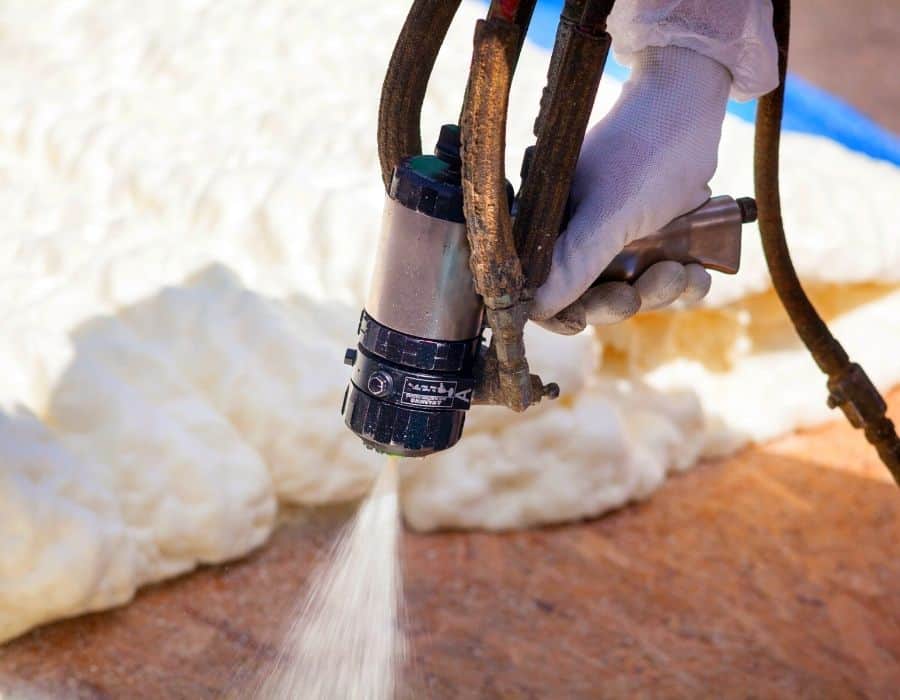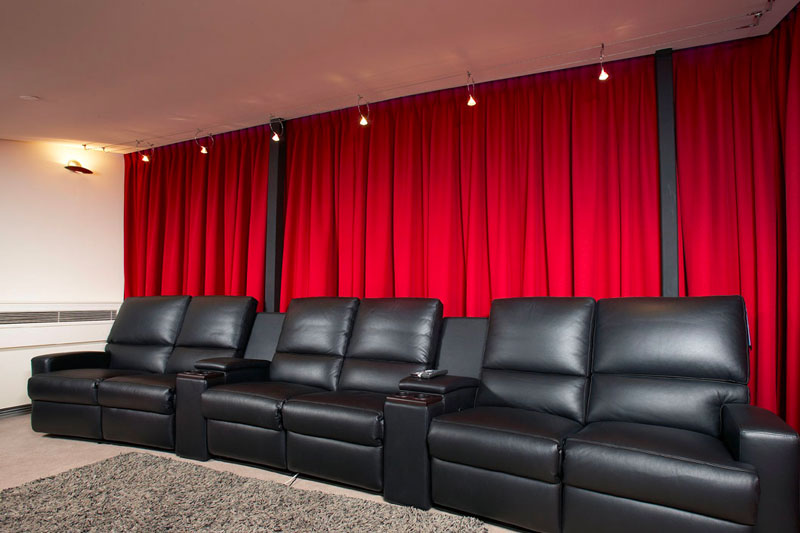How to Soundproof a Home Office

Sound Deadening vs. Sound Blocking
First and foremost, consider the difference between sound deadening and sound blocking. Imagine you have three noisy boys with a drum set banging in a room next to your office, you want your office to be quieter, so you buy sound deadening drapes to drape over the windows, similar to the pointed foam panels used in recording studios. Read more How to Soundproof a Room for Drums here.
Unfortunately, spending over a thousand dollars on such items will do very little to soundproof your office. These items aid in sound deadening by preventing sounds from reverberating throughout the space. However, they will not be sufficient to prevent certain sources of noise from entering the room. More info about Sound Deadening on rockwool.com
Sound-blocking products will help to keep all forms of noise from entering the space. To be most effective, sound blocking requires thickness. This is why it is far easier to create a soundproof home office than it is to soundproof an existing home office. Read more about Sound Blocking Materials on acousticalsurfaces.com
So, How to Soundproof a Home Office?
There are a number of ways you may use to decrease the amount of unwanted noise in your home office. You may create a virtually quiet environment so you can focus on your job by combining these techniques.
1. Seal the Holes
This should be your first priority when it comes to soundproofing your home office. Even the tiniest cracks in a concrete wall can allow sound to get through.
First, look for any gaps in the walls or ceilings of your home office and seal them. Although it will take some time, you will be pleased you did it after you are through. To fill up the gaps, you may use a number of materials. Fiberglass batt insulation has proven to be a good choice to get the job done!
| Seal the holes with Fiberglass | Fiberglass is utilized as a heat insulation material. It is, nevertheless, an excellent sound-absorbing material. Installing fiberglass batt insulation to cover holes in your walls creates a barrier that absorbs vibrations from the source and distributes them to the surrounding areas. This reduces the amount of sound that travels from one location to another. |
| Seal the wire cable | If cable wires from another room pass through a wall, they are fed via a hole in the wall. Even though the holes are small, airborne noise may readily pass through them, and if there are enough of them, they can be a substantial source of unwanted sound. |
Check your walls for any cracks or holes. If you come across any, close them up. Cut pieces of soundproofing foam or insulation and insert them into the holes around the wires if wires are routed through any holes.
Video: Soudapack WST – Watertight Sealing of Cable Penetrations
2. Soundproof the Doors
If closing the door to your office doesn’t seem to be enough to keep annoying sounds out, consider soundproofing it. Install weather stripping along the bottom of the door to keep outside noise out.
You may also use a door sweep to cover the bottom of the door. This technique can help to improve the comfort of your office by blocking off drafts and preventing heat from leaving, in addition to reducing unwanted noise.
Another soundproofing alternative is to replace a hollow-core door with a solid-core door. Solid doors are significantly more effective in sound absorption than hollow doors.
Most interior doors are hollow, but if you’re not sure, knock on it to see if it’s hollow or solid. You have a solid-core door if it sounds like you’re banging on a substantial piece of wood. However, you have a hollow door if it sounds empty within.
Video: How to Soundproof a Door (6 Best & Easy DIY Ways)
3. Soundproof the Windows
Another method noise enters your home office is through the windows. They may be a significant issue, especially if you live on a busy street or have noisy neighbors. You can go the cheap or the pricey route, just like you can with the door.
The more expensive option is to purchase soundproof windows and have them professionally installed. Double-paned windows with a spacer between them are known as soundproof windows.
The cheapest option is to purchase soundproof curtains or noise-reducing curtains. To be extra effective, you’ll need to make sure they fit from the ceiling to the floor. Read more about How to Reduce Noise from Windows.
Video: Soundproofing Windows – What Works What Doesn’t
4. Soundproof the Floor
The floor is another source of noise in your home office. If your home office has a hard surface for a floor, such as wood, echoes are likely to occur. Because hard surfaces reflect sound waves, any sound in your home office is repeated back to you, we mentioned this in our article: How to Soundproof a Studio.
To counteract this problem, consider placing some soft rugs in the room. Soft surfaces absorb sound and so provide soundproofing in your home office. Another option is to place some soft rugs in front of your home office. Placing the rugs outdoors will aid in the absorption of noise before it enters the workplace.
If the noise is coming from beneath your home office, such as the garage or laundry room, you may want to consider putting a sound deadener mat under your carpet.
Video: Soundproof a Floor – 8 Cheap & Easy DIY Ways!
5. Soundproof the Air Vent
When it comes to soundproofing a room in the house, soundproofing air vents is sometimes ignored. This is almost always a massive mistake. The air vents are most likely the largest openings in your walls, and as a result, the most common route for noise to enter your workplace.
There are a few options for soundproofing air vents. You may use some material or expanding foam to plug the air vent. You may even construct a sound maze in the vent if you like. This minimizes the amount of noise that gets through while still allowing air to circulate into space.
Video: How to soundproof air vent: Silence a Noisy Vents
6. Soundproof the Ceiling
If your upstairs neighbors or family members are making a lot of noise, you should soundproof your room’s ceiling. Furring strips are one technique to soundproof your ceiling.
On the ceiling, you’ll need to attach half an inch of furring strips above three-quarter-inch insulation. Because you’ll need to tape, sand, and paint your ceiling afterward, this will be a long project.
For optimal results, consider using acoustic ceiling panels instead of furring strips. However, because acoustic panels are costly, be sure this choice suits your budget. Alternatively, drywall can be attached to the ceiling to make it sound resistant. Sound-absorbing materials may be found in drywall.
Video: Top 6 Ceiling Soundproofing Tips – What Works What Doesn’t
7. Soundproofing Paints and Foams
Noise may be reduced in your home office by using soundproof paint. If you’ve sealed all of the holes and openings in your wall but still hear noise, it’s time to repaint. We only propose soundproof paint as an additional layer, not as a soundproofing solution in and of itself.
You may also soundproof your walls with acoustic wall foam. Acoustic foam on the walls functions similarly to acoustic panels beneath the carpet. These foams limit the amplitude of sound waves by increasing air resistance. You may get acoustic wall foam at a reasonable price.
Video: Soundproofing Paint – Does it Work? All the Facts You Need!
8. Get a White Noise Machine
If you can’t seem to get rid of the noise, you might wish to invest in a white noise machine for your office. The sounds produced by a white noise machine will block out all other noises. As a result, you’ll have an appropriate working atmosphere.
This does not necessitate the purchase of expensive equipment. A basic, low-cost model that does the job should suffice. Furthermore, the white noise machine may be used for other purposes, such as in the dorm room if you are living with a noise roommate! Read here How to Soundproof a Dorm Room.
Video: What is WHITE NOISE MACHINE? What does WHITE NOISE MACHINE mean? WHITE NOISE MACHINE meaning
9. Isolate the Echoes
Another type of noise that prevents you from working in your home office is echoes. Although minimizing echoes in your home office will not make the room quieter, it will lessen the impact of any noise that enters the space.
You may find out if your home office is prone to echoes by doing an acoustic test. Simply shout as loudly as you can and then listen for any echo. If there is an issue, you must address it. It’s simple to solve the echoes problem in your home office. The first stage, as previously said, would be to take care of the floors.
| Soft rugs | Install a soft rug on the floor that will absorb rather than reflect any noise. |
| Canvass or gallery | On the walls, you could wish to display some huge canvas art gallery. Curtains can also be used to keep sound from bouncing off the windows. |
The key to dealing with echoes is to surround yourself with thick, soft fabrics. If you want to see how echoes affect music, go inside the bathroom and play some music on your phone. Read here How to Soundproof a Bathroom.



